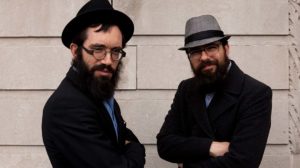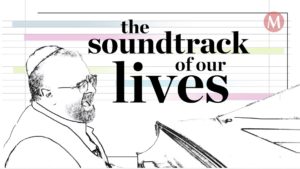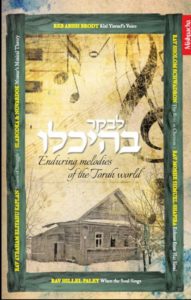The Color of Miracles
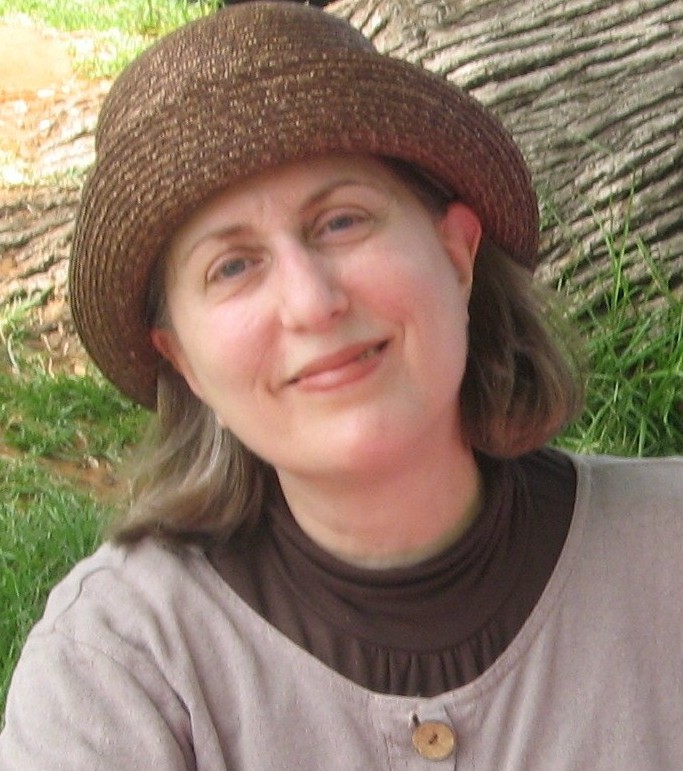
She’s only 27, but Ahuva Manes’s color-packed, energy-filled oil paintings are already turning heads in the Jewish art world
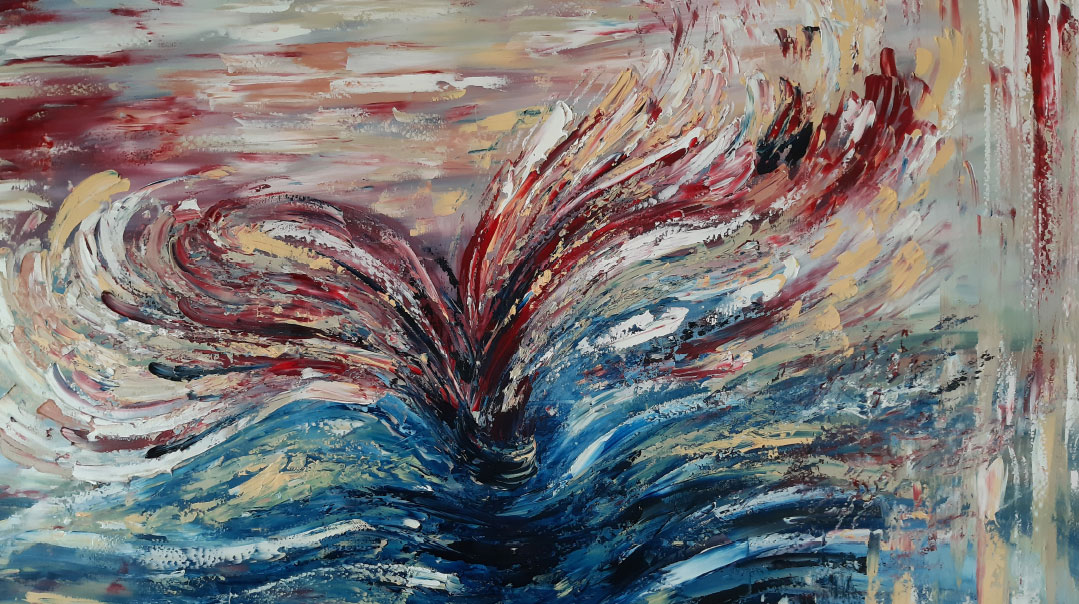
There’s a popular myth in the secular world that the best artists are tormented souls who had miserable childhoods — and that angst-filled, outcast experiences become the gist for the brilliant works they create in their equally tormented adult years.
“That’s not me,” says Ahuva Manes, laughing. “I grew up in Har Nof, a typical Bais Yaakov girl.”
What, then, is the fuel that ignites the explosion of color and energy in this 27-year-old artist’s paintings — an already impressive body of work that has landed her display space at one of Jerusalem’s most prestigious art galleries?
In a word: miracles. Kri’as Yam Suf. Davening at the Kosel. Being a Jew. While many of us take the miracle of Jewish existence for granted, Ahuva has the gift of continually seeing it with fresh eyes — and the desire to share her vision and excitement with others through her art.
“It’s sort of a shame that we learn about the miracles that happened to Am Yisrael when we’re in kindergarten,” Ahuva explains. “We learn that at Kri’as Yam Suf the water split into two. Okay, we later think, why shouldn’t it split into two? We get used to the miracles. It’s no longer a ‘Wow!’ It’s just a fact. I’m trying to put back in the ‘Wow!’ ”
Be Yourself
Ahuva always loved art, but she had to be convinced her talent was something special. Like many kids, her interests were diverse. It was her father, Yonah Berzon, who saw the potential and encouraged her to concentrate on her art.
“He kept pushing me to move forward and develop my own style,” Ahuva recalls, when we meet at her Ramat Beit Shemesh studio.
“Don’t worry,” he reassured her, when she balked at having to learn the rules for how to make a realistic portrait or landscape painting. “Later, you can do what you love. You’ll do your own thing.”
From her mother, Karen (née Zemel), she received an additional lesson in the value of persistence and believing in one’s unique path. “My mother came to Eretz Yisrael when she was 18 and stayed,” says Ahuva. “She had real mesirus nefesh to live here. Her family lived in the States, but Israel was where she wanted to be.”
With these role models to guide her, Ahuva was able to take the reactions to her first efforts in abstract styles in stride. “I’d get comments like, ‘What is that? It doesn’t look like anything.’ Sometimes I wondered how I could continue to paint if people didn’t appreciate my art. And I decided, yes, I would.
“I wasn’t concerned about whether people were going to come and buy it. I kept on going, because I loved it. Now I get compliments and, baruch Hashem, I sell my art.”
Living Inspired
While some artists like to take their canvas and paints to some beautiful spot and find ideas in nature, Ahuva says she doesn’t have to look far to find inspiration: It’s all in her head.
The source for the idea can be a song, her son’s parshah sheet, or even a story she herself heard in kindergarten. For instance, one of her favorite paintings depicts an incident from the life of Rabi Akiva — the moment when he saw drops of water boring a hole in a rock.
“When I heard this story, as a six-year-old, I was like, ‘Oh my gosh!’ When he saw the water dripping on the stone, it showed him that no matter what you want to do, if you keep on doing it, even if it’s one drop at a time, you’ll make a hole in the stone. That story changed my life.”
Another inspiration came from the Selichos prayers. “One morning I woke up and I said, ‘So what am I painting today?’ I’d heard Selichos the day before, and had been struck by the tefillah ‘Ki baisi, bais tefillah,’ and I thought: a shul! And then I began thinking that Am Yisrael is so colorful, so varied, and Hashem accepts all our tefillos. Hashem loves all of us.”
The result is a soaring, multicolored canvas where you can feel the tefillos flying upward. It’s what we might see if we could look through the solid mass of a shul’s walls and the tallis-wrapped figures bent in prayer and see the pure energy of the moment.
What happens when she wakes up and her mind is blank? “If I don’t have an idea, I go back to sleep for a little bit,” she says, laughing. But she doesn’t always have to start with a blank canvas. She explains that she never works on just one painting at a time. Usually there are several unfinished paintings in her studio, waiting for her attention. Sometimes she’ll start the morning by sitting on the couch and looking at a canvas and deciding what needs to be changed before she gets to work.
One constant is Ahuva’s love of oil paints, her preferred medium. “I throw tons of paint on the canvas,” she says. “There are certain colors that I like combining, which I use in almost all my paintings. I’m fascinated by how much you can do with the same colors.
“When I start painting, I just see the paint and canvas,” she continues. “I only paint subjects that I have a very strong feeling towards—things that mean something very big. My paintings show the bright side of being a Jew; there are so many beautiful moments in our life. I show this with all the colors, with all the dots, all the splashes—it’s all positive energy.”
Pointing to one of her paintings of the walls of Jerusalem, she excitedly exclaims: “Can you compare anything to Yerushalayim? The Kosel isn’t just stones. On Tishah B’Av we cry over stones? Of course not. The Shechinah is there! You’re painting the spot where all of Am Yisrael goes to daven and connect to Hashem.”
Turning to a painting of Kri’as Yam Suf, she continues, “The sea didn’t just divide into two neat halves. It made a big splash when it split. Something was happening. There was movement!”
Family Portrait
Ahuva comments that she tries to paint three times a week — although inspiration can strike at any time. “Sometimes on Motzaei Shabbos I’ll still be in my Shabbos clothes and I’ll tell my husband, ‘I have to paint now.’ Baruch Hashem, my husband understands when I say I need to paint.”
Her husband is David Manes, a professional musician, and he joined us for part of the interview. He tells me he’s totally supportive of his wife’s work, even when it gets messy.
“Sometimes I use my fingers, instead of a brush, if there is a certain shape I want to create,” says Ahuva. “People told me to wear gloves, but that’s not for me. I like to feel the paint. But once you touch the colors, they’re everywhere. So my husband helps me keep the house clean.”
Just as David will include their two sons — Shaya, age four and a half, and two-year-old Natan — in impromptu jamming sessions on the keyboard, the kids will sometimes be given a canvas and paints and the opportunity to create the family’s next masterpiece.
“It’s a whole family project,” says Ahuva. “We’re all in this together.”
However, she does admit, “Sometimes Shaya will look at one of my canvases and say, ‘It’s just scribbles.’ And I’ll say, ‘Look again. It’s Kri’as Yam Suf.’ ”
Both Ahuva and David agree that they don’t mind if the kids get messy while they paint. They also believe that, whether it’s art or music, young kids should be given a chance to explore, rather than be told a lot of rules.
Ahuva, who also teaches art to women and high school girls, tries to at least partially implement that philosophy in her classes. While she’ll teach her students the basic tools they’ll need to create art — how to use color, brush techniques, perspective and composition, portrait painting, abstract painting, and the like — she says, “I don’t tell my students what style to paint in; that’s for each person to decide. And I always tell parents that their daughter isn’t making something for their wall. She’s doing what she loves, so don’t say it’s just scribbles.
“I teach my students to follow their heart, to do what they love. I get so much satisfaction when I see a student walk out of a class feeling proud of her painting.”
Great Moments
Although Ahuva only began painting in her own style in 2012, in seven short years she has already developed an artistic “vocabulary” that’s uniquely hers.
For instance, she never paints just one solitary person. When there are people in her paintings, they’re in a group.
“To me, Am Yisrael is endless. And if you’ll notice, I never show the end of them. That’s because Am Yisrael are like the stars in heaven, like the grains of sand. It’s an expression of hope.”
Ahuva also points out that very often the people in her paintings are tiny, while the miracle happening around them is huge. Returning to one of her favorite subjects, Kri’as Yam Suf, she comments, “When the sea split, it made a lot of noise. So making the waves big, in comparison to the people, conveys the power of the miracle.
“Right before last Pesach I sold my first painting of Kri’as Yam Suf. The people who bought it later told me that during their Seder, when they saw the painting hanging on their wall, they said, ‘Here’s Kri’as Yam Suf!’ They were so excited.”
Even in her depictions of a chassan and kallah standing under the chuppah, the young couple are small in comparison to the burst of colors swirling around them.
“Standing under the chuppah is a very special moment,” says Ahuva. “They say the Shechinah is there. And the Shechinah is happy. It’s a huge moment in Jewish life, when a young couple starts to build their bayis ne’eman. So you could say that the chuppah is the moment of the kallah and chassan. But there’s so much more going on. We’re small in comparison to the moment.”
Another interesting aspect of Ahuva’s artistic world is that we never see the faces of the people. We glimpse only their backs — the kallah’s flowing white gown, the men wrapped in their talleisim.
“It’s true. I don’t do faces,” she says, although she herself can’t explain why. “But the tallis is something I connect to very strongly. I love seeing my husband come home in the morning wrapped in his tallis. A hat and jacket are nice, but other people also wear them. The tallis is a Jewish look. There’s something very moving about a tallis; you get buried in one.”
Our conversation, which until now has been punctuated with lots of laughter, has suddenly turned serious. As we look at two very different paintings of the Kosel, Ahuva comments, “Sometimes you go, and you feel so happy, so connected to Hashem. And sometimes you go, and you want to cry. Every time it’s something different.
“Even when you’re looking at an object, like stone, you’re seeing something different every day. You view the world differently. So sometimes I might paint the Kosel so you feel like you’re walking right up to it, while other times it’s a view from the outside.”
Thus, while she’ll often return to the same subject, each painting has a different mood. Yet there’s always that exuberant energy — a quality that brought her artwork to the attention of Lucien Krief, one of the foremost art dealers in Jerusalem.
Before Ahuva had her interview with Mr. Krief, whose gallery is located next to the tony King David Hotel, Ahuva was warned that he could be blunt; if he doesn’t like an artist’s work, he’ll say so. But he was so excited by Ahuva’s work that he immediately put one of her paintings in the gallery’s window.
“What he told me was he likes my art because it’s a style he’s never seen before.”
The Never-ending Painting
Ahuva only paints Jewish subjects, but there are interesting omissions. For instance, she doesn’t paint women lighting their Shabbos candles or making challah — popular subjects for Jewish artists.
“Making challos is a beautiful thing, and maybe someday I’ll do it. But most of all, I love miracles,” Ahuva says. “It’s a way of Hashem showing us: Here I am. It’s a reminder that He is taking care of us all the way.
“Also, miracles are a way to let your imagination work, and one of my favorite things in the world is to use my imagination to create things. For instance, I never saw Kri’as Yam Suf. But when I heard the story for the first time, as a small child, I was amazed. I try to paint that feeling.
“Some people say painting is just chomer, but it’s not. There are so many meanings and emotions in a painting. That’s the idea of an abstract painting. You look at it — and you can look at it for hours — and you imagine things. Whatever you see, that’s what it is.”
And Ahuva doesn’t mind when someone sees something entirely different from what she intended. For instance, there was the potential customer who stood in front of one of her paintings of a chasunah and said, “That chuppah looks like a ladder.” She replied, “Great. You’ll get a chuppah and a ladder for the same price.” She made the sale.
In a rare moment of doubt, Ahuva asked her rav whether or not she should continue to paint. He encouraged her to continue. “He said it was a good thing to do, because you could really move someone. It’s bringing Judaism into your home, bringing the beautiful parts of our life into your home.”
Of course, life isn’t only about beautiful moments. There are challenges, disappointments, and frustrations. How does she stay positive, so her art will be imbued with positive energy?
“I have a very positive great-grandmother,” Ahuva explains. “She’s 95. You can put her anywhere and she’s happy. But she says she’s always working on it — and from her I’ve learned to work on myself every day too. I’m not perfect. I get upset. But hopefully you grow; hopefully you’re not staying in the same place you were yesterday.”
But while we are supposed to continually work on ourselves, the same cannot be said about a work of art. At some point, the artist has to say: Enough! How does Ahuva know when it’s time to put down the paintbrush?
“There’s a quote from the artist Paul Gardner that says, ‘A painting is never finished — it simply stops in interesting places.’ I stop when my feelings tell me to stop. There comes a point where you have to let it go. If you want to become better, become better in your next painting.”
(Originally featured in Family First, Issue 675)
Oops! We could not locate your form.


